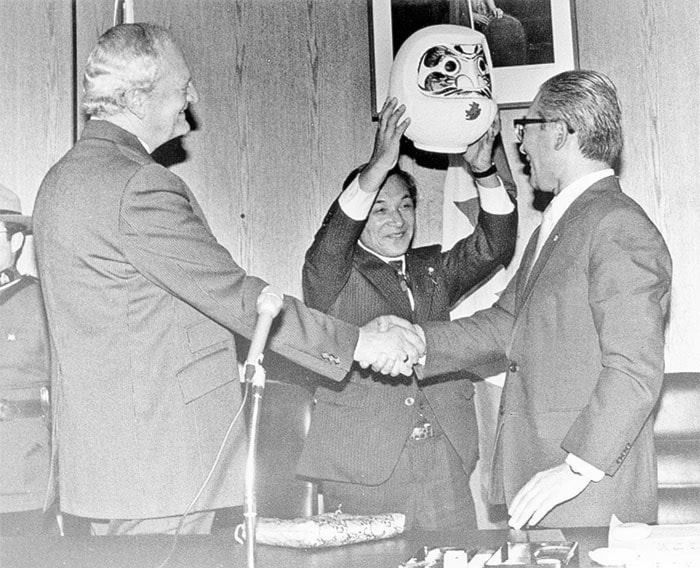The history of Campbell River’s relationship with our sister-city Ishikari, Japan, goes back to the 1980’s, and is one of the longest standing town sisterhoods in Canada. After the Second World War, Canada was looking to make amends for the injustices inflicted upon Japanese Canadians, and this led many Canadian communities to sign ‘twinning’ agreements with Japanese communities. The intention was to promote cultural understanding, and to establish friendships and economic ties.
In 1981, the town of Ishikari approached Jim Murray, the CP Air Public Relations Advisor for the Orient, asking him to assist them in finding a sister city in Canada. Campbell River exhibited many similarities with Ishikari, such as the importance of salmon to the community. Ishikari is the salmon capital of Hokkaido, Japan and, like Campbell River, hosts an annual Salmon Festival. The cities were a perfect match. So, two years later, delegates from both cities met and an official twinning agreement was signed.
Today, the Torii gate stands as a proud symbol of friendship between the two communities. Located across from the Museum in Sequoia Park, it was a gift presented to Campbell River from the town of Ishikari to commemorate the sister cities’ 10th anniversary. In exchange, Campbell River gifted a totem pole carved by Bill Henderson, which now stands out front of Ishikari’s City Hall.
Freeman Mary Ashley was a member of the City Council at the time the agreement was signed and has been involved in many city exchanges and the organization of anniversaries with Ishikari.
Ashley observes that “while we were unable to really establish an economic basis [with Ishikari], we have been extremely successful with establishing the cultural and educational parts of the relationship”. “The youth program” she adds, “has been enormously successful”.
For Ashley, one of the many highlights that arose from Campbell River’s twinning agreement with Ishikari has been the formation of long standing friendships between families of the two communities as a result of the youth exchange programs.
Mayor Andy Adams, past President of the Campbell River Twinning Society, says that there were approximately sixty twinning relationships formed initially between Canada and Japan, but that many of these relationships have lapsed with minimal activity.
A major contributing factor was the severe cut-back in funding from the government’s gaming branch.
Campbell River and Ishikari are the exception with a strong Senior Student Exchange and Young Ambassador Exchange programs that have resulted in close to 900 students travelling between our two cities since inception. Adams also notes that today the province is pushing for communities to establish ties with China, rather than maintain long-term relationships with Japan.
The Twinning Society’s President, Dave Armitage, hopes that the cultural exchange with Ishikari will continue despite past financial struggles. According to Armitage, the student exchange programs have life changing effects on all who are involved.
Since the agreement was signed in ’83, Armitage feels that the relationship between Campbell River and Ishikari has evolved into much more. “Today we are not just sister cities”, Armitage says, “We’ve become family”.
The Society celebrated its 30th anniversary in 2013. An exhibit will be installed in the Museum at Campbell River from March 18 to May 30, with a special opening reception on March 29, that will honour the history of the relationship between Campbell River and Ishikari.
The exhibit will focus on the key milestones of the twinning and showcase some of the major gifts exchanged between the two communities.
